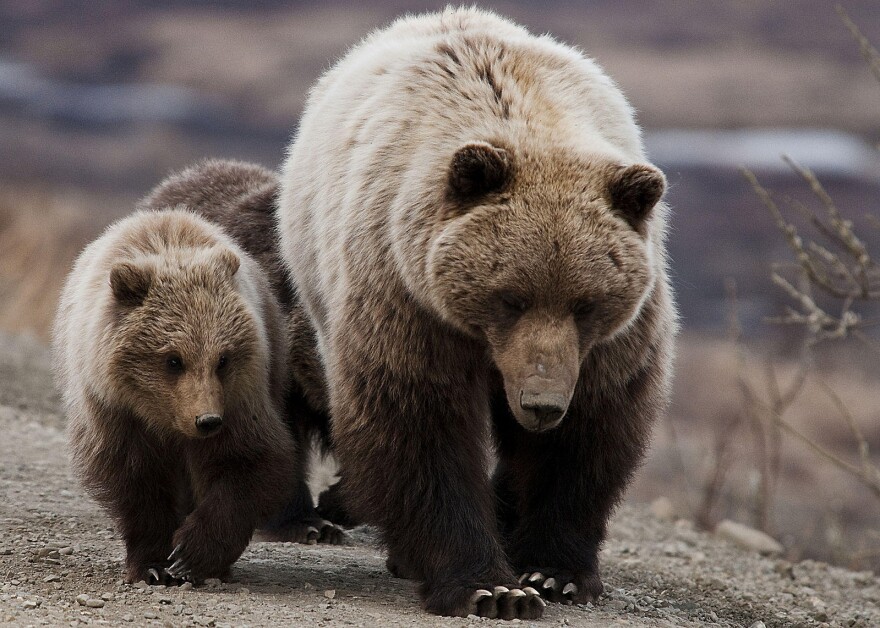Last year, the Interagency Grizzly Bear Study Team estimated the Greater Yellowstone Ecosystem grizzly population was around 700. The team did that by using a calculation that uses several different data points.
Study team leader Frank Van Manen said the calculation has provided a conservative estimate of the population.
"We had a pretty good sense that underestimation was fairly large at this point, simply because we have reached higher densities in the core," said Van Manen. "But we didn't know exactly how [or] to what degree we were under estimating and how we could best correct for that."
One data point the method relies on is the number of female grizzlies with cubs that are spotted on the ground within 30 kilometers of each other.
"Say it's 70 females with cubs on the ground, we can only identify maybe 50 of those simply because that criterion was too conservative to separate observations out into the unique clusters of individuals that they actually belong to," said Van Manen.
The team decided to use simulations to see if decreasing the distance helped provide better estimates. They decided 16 kilometers provided a relatively unbiased estimate without the risk of overestimation.
The team also reevaluated the model-averaging approach to effectively distinguish future population estimates. The existing system can only detect a leveling off of the population.
"If[the grizzly population] goes back up, or it goes down from this point, we cannot detect it with this current system that is in place," said Van Manen. "It wasn't designed to do that and it's just not powerful enough to do that."
The team decided to use statistical modeling techniques known as generalized additive models to create a new model to detect future populations. Van Manen said now the model will be able to predict if the population is going to decline, increase or stabilize.
2021 will be the first year that the team estimates the animal population with the new 16 km criteria. Van Manen said the population may appear to increase by as much as 40 percent but it is important for the public to understand that nothing has actually changed on the ground.







